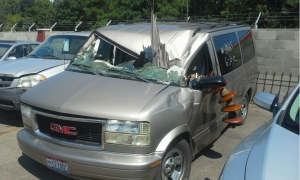 I’m writing this and other articles about automobile insurance for readers who, for some reason, have not previously dealt with car insurance. This may include recent graduates who have been insured on family cars while living at home. I’m also writing it for people who have auto insurance but are still confused about it. And at the risk of offending personal injury attorneys that handle auto accidents, I’m writing this insurance guide so that consumers can learn about and maybe handle some basic issues concerning their car insurance without a lawyer.
I’m writing this and other articles about automobile insurance for readers who, for some reason, have not previously dealt with car insurance. This may include recent graduates who have been insured on family cars while living at home. I’m also writing it for people who have auto insurance but are still confused about it. And at the risk of offending personal injury attorneys that handle auto accidents, I’m writing this insurance guide so that consumers can learn about and maybe handle some basic issues concerning their car insurance without a lawyer.
Remember, knowledge is power (and it also sometimes saves money). There are many issues where you will absolutely need legal help, but there are also some when you don’t. Regardless, understanding more about how your car insurance works is better than understanding less.
Auto Insurance Terminology
Auto insurance is sometimes called “automobile insurance,” “car insurance” or “motor vehicle insurance.” According to the International Risk Management Association, State laws dealing with automobile insurance requirements often distinguish between requirements for different kinds of motor vehicles. Sometimes the distinguishing factors are weight or the number of axles. Sometimes, categories of vehicles do not have to have insurance at all, such as bicycles, mopeds, and farm equipment. But all of that depends upon State law.
What is Auto Insurance?
The simple answer is that auto insurance is insurance coverage on a car, truck or another motor vehicle that does not fit into an exception to a State’s law requiring motor vehicle insurance. Since insurance law is State-based, the scope of the exceptions vary; therefore, the requirements for auto insurance also vary. Although there are many similarities between State requirements, you should familiarize yourself with the requirements of your own.
A good first place to check is by contacting the Department of Insurance in your State (or that where the vehicle is going to be registered, if different). You can find the contact information for your Department of Insurance here. You can also contact the office of the State official responsible for registering motor vehicles (there are typically offices in every county of your State, so it should be easy to find out).
The American Automobile Association (AAA) also has a useful guide to some of the car insurance requirements of all States that you can find here.
As we will discuss, there are kinds of automobile insurance that are not required by law. But, they may be required for other reasons, such as by a bank or a finance company that lends you money to buy a vehicle. There are other kinds that just may be smart to have.
What Purposes Does Auto Insurance Serve?
Like other insurance, auto insurance shifts the burden of financial loss from the insured to the insurer. That is, subject to the terms of the insurance policy and the amount of insurance, the insurance company agrees to pay a financial loss sustained by the insured. The risk that is “shifted” and by how much is defined by the policy. A “risk” is the likelihood or non-likelihood that an event will occur. In the case of motor vehicle insurance, the risk relates to the ownership or operation of a motor vehicle. The risk is measured in terms of money so the insurance company pays money to or on behalf of the person or entity covered by the insurance policy.
What Comes Next?
A single automobile insurance policy usually provides more than one kind of automobile insurance protection. Therefore, in the next several articles we will discuss each kind of protection, whether it is required, what it does, how it works, and whether or not it may be right for you. You might want to print all of the articles and keep them with your automobile insurance policy. But remember, this is a basic guide only-the terms and conditions of your insurance policy will always control.
